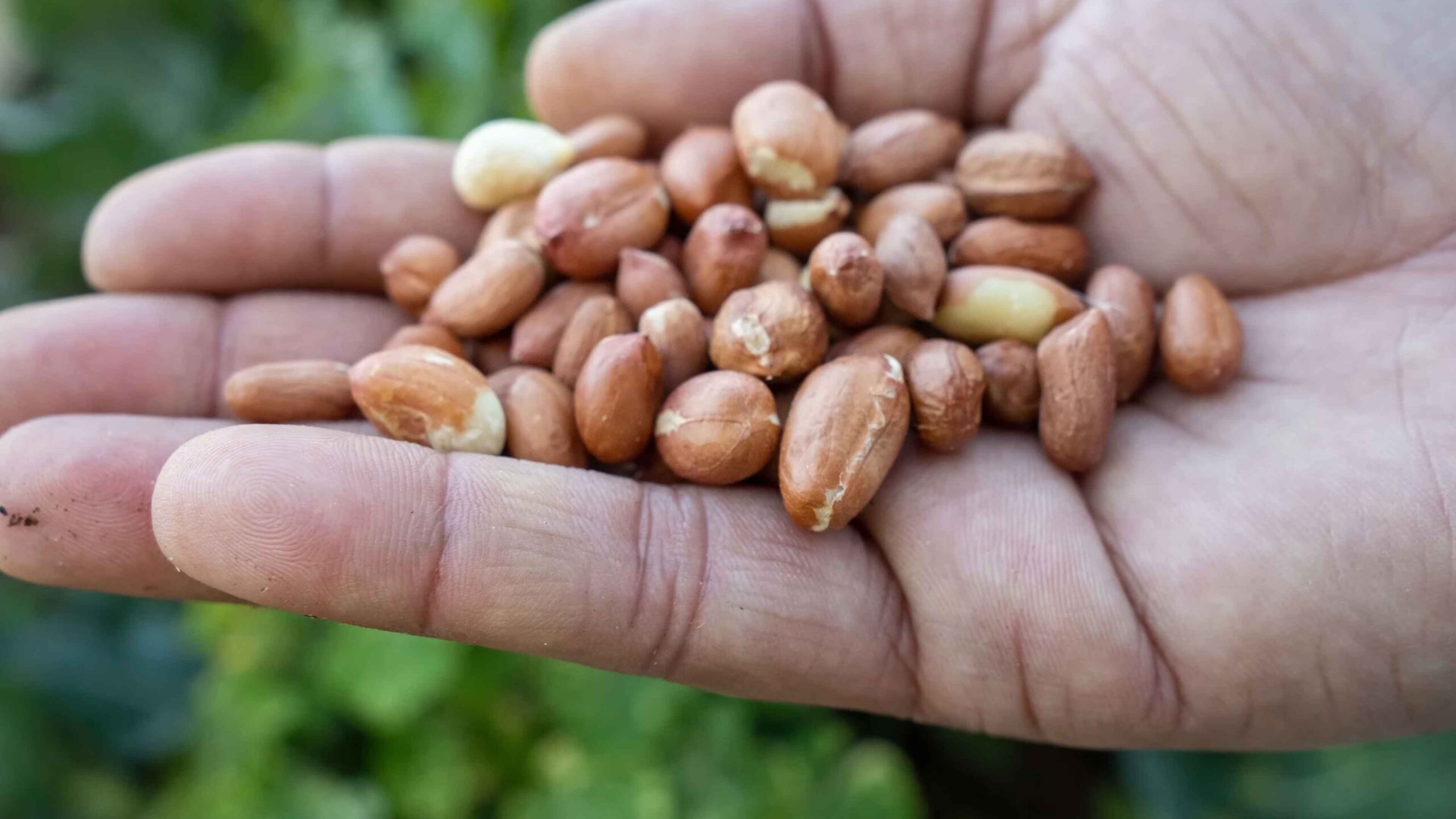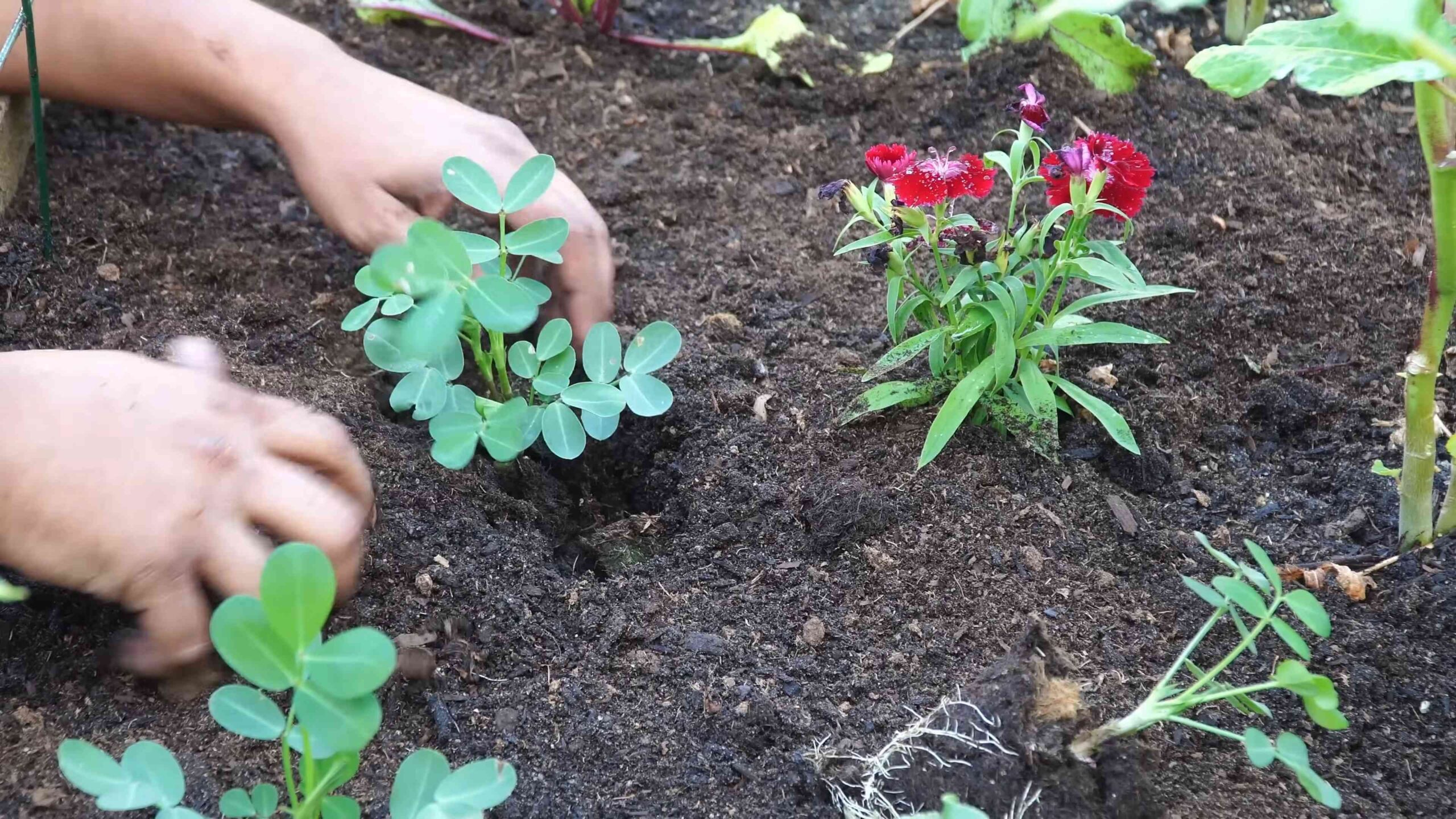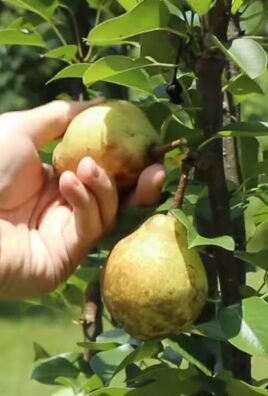Growing peanuts backyard might sound like a whimsical dream, conjuring images of sprawling Southern plantations, but I’m here to tell you it’s totally achievable, even if you’re working with a small urban garden! Forget trekking to the store for your peanut fix; imagine the satisfaction of harvesting your own homegrown bounty, right outside your back door.
Peanuts, despite their name, aren’t actually nuts! They’re legumes, related to beans and peas. Their cultivation dates back thousands of years in South America, where they were a staple food source. Over time, they spread across the globe, becoming a beloved snack and a crucial ingredient in countless cuisines. But beyond their culinary appeal, there’s something incredibly rewarding about nurturing these quirky plants, watching them flower, and then witnessing the magic as they bury their pods underground to mature.
Why should you try growing peanuts backyard? Well, for starters, it’s a fantastic way to connect with nature and learn about the fascinating life cycle of a plant. Plus, it’s a sustainable way to enjoy fresh, delicious peanuts without relying on commercially grown options. In this article, I’m going to share some simple, DIY tricks and hacks that will help you successfully cultivate peanuts in your own backyard, regardless of your gardening experience. Get ready to dig in and discover the joy of homegrown peanuts!

Growing Peanuts in Your Backyard: A Beginner’s Guide
Hey there, fellow gardening enthusiasts! Ever thought about growing your own peanuts? It’s surprisingly easy and incredibly rewarding. Imagine the satisfaction of harvesting your own homegrown peanuts, roasting them up, and enjoying a delicious, healthy snack. I’m here to guide you through the entire process, from planting to harvesting, so you can experience the joy of growing your own peanuts right in your backyard.
Choosing the Right Peanut Variety
Before we dive into the nitty-gritty, let’s talk about peanut varieties. Not all peanuts are created equal, and some are better suited for home gardens than others. Here’s a quick rundown:
* Virginia Peanuts: These are the large, gourmet peanuts you often see roasted in the shell. They require a longer growing season (120-150 days) and are best suited for warmer climates.
* Spanish Peanuts: These are smaller, reddish-skinned peanuts with a higher oil content. They mature faster (around 100 days) and are more tolerant of cooler temperatures.
* Runner Peanuts: These are the most common type of peanut grown commercially in the United States. They have a uniform size and shape, making them ideal for peanut butter. They also need a longer growing season.
* Valencia Peanuts: These peanuts typically have three or more kernels per shell and are known for their sweet flavor. They mature relatively quickly (90-110 days).
For beginners, I recommend starting with Spanish or Valencia peanuts, as they are more forgiving and have a shorter growing season. Check your local climate and growing season length to determine the best variety for your area.
Preparing Your Peanut Patch
Peanuts need a sunny spot with well-drained soil. Here’s how to get your garden ready:
* Sunlight: Peanuts need at least 6-8 hours of direct sunlight per day. Choose a location in your yard that gets plenty of sunshine.
* Soil: Peanuts prefer loose, sandy loam soil with a pH between 6.0 and 6.5. If your soil is heavy clay, amend it with compost, peat moss, or other organic matter to improve drainage.
* Nutrients: Peanuts are legumes, which means they can fix nitrogen from the air. However, they still benefit from a balanced fertilizer. Before planting, amend your soil with a fertilizer that is low in nitrogen (the first number on the fertilizer label), but higher in phosphorus (the second number) and potassium (the third number). A 5-10-10 fertilizer works well.
* Weed Control: Weeds can compete with peanuts for nutrients and sunlight. Remove any weeds from your planting area before planting and consider using a layer of mulch to suppress weed growth.
Planting Your Peanuts
Now for the fun part – planting! Here’s how to get your peanut plants off to a good start:
1. Timing: Plant your peanuts after the last frost when the soil temperature has warmed to at least 65°F (18°C). In most areas, this is typically in late spring or early summer.
2. Seed Preparation: You can plant raw, unsalted peanuts directly from the grocery store. However, for better germination, consider shelling the peanuts and soaking them in water for a few hours before planting. This will help soften the shells and speed up the germination process.
3. Planting Depth and Spacing: Plant the peanuts about 1-2 inches deep and 6-8 inches apart in rows that are 2-3 feet apart.
4. Watering: Water the newly planted peanuts thoroughly. Keep the soil consistently moist until the seedlings emerge.
Caring for Your Peanut Plants
Once your peanut plants are established, they require relatively little care. Here are a few tips to keep them healthy and productive:
* Watering: Water your peanut plants regularly, especially during dry periods. Aim for about 1 inch of water per week. Avoid overwatering, as this can lead to fungal diseases.
* Weeding: Continue to remove any weeds that emerge around your peanut plants.
* Hilling: As your peanut plants grow, they will produce “pegs” that grow downward from the base of the plant and into the soil. These pegs are where the peanuts will develop. To encourage peanut production, hill the soil around the base of the plants every few weeks. This will provide the pegs with loose soil to penetrate.
* Fertilizing: Peanuts don’t need a lot of fertilizer, but you can side-dress them with a small amount of fertilizer that is low in nitrogen about a month after planting.
* Pest and Disease Control: Peanuts are relatively pest-resistant, but they can be susceptible to certain diseases, such as leaf spot. If you notice any signs of disease, treat your plants with an appropriate fungicide.
Harvesting Your Peanuts
Harvesting is the most exciting part of growing peanuts! Here’s how to know when it’s time to harvest and how to do it:
1. Timing: The timing of your harvest will depend on the variety of peanuts you are growing. Generally, peanuts are ready to harvest when the leaves start to turn yellow and the inside of the peanut shells are brown. This is typically about 120-150 days after planting for Virginia peanuts and 90-110 days for Spanish and Valencia peanuts.
2. Testing: To be sure your peanuts are ready, dig up a few plants and check the peanuts. The peanuts should be plump and the shells should be well-formed.
3. Digging: Once you’ve determined that your peanuts are ready, use a garden fork or shovel to carefully dig up the plants. Be careful not to damage the peanuts.
4. Shaking: Gently shake the soil off the plants.
5. Curing: Hang the plants upside down in a well-ventilated area for 2-4 weeks to cure. This will allow the peanuts to dry and develop their flavor.
Curing and Storing Your Peanuts
Proper curing is essential for developing the best flavor and preventing mold growth.
1. Hanging: After digging up the plants, gently shake off excess soil. Hang the entire plant upside down in a dry, well-ventilated area, like a garage or shed. Make sure the area is protected from rain and direct sunlight.
2. Drying Time: Allow the peanuts to dry for 2-4 weeks. You’ll know they’re ready when the shells are brittle and the kernels rattle inside.
3. Shelling (Optional): Once cured, you can shell the peanuts if you prefer. This is easier to do after they’ve dried completely.
4. Storage: Store your cured peanuts in an airtight container in a cool, dry place. They can be stored at room temperature for several months or in the refrigerator for up to a year. For even longer storage, you can freeze them.
Roasting Your Homegrown Peanuts
Now for the best part – roasting and enjoying your homegrown peanuts! Here’s a simple method for roasting them in the oven:
1. Preheat: Preheat your oven to 350°F (175°C).
2. Preparation: Spread the peanuts in a single layer on a baking sheet.
3. Roasting Time: Roast the peanuts for 20-25 minutes, or until they are golden brown and fragrant. Stir them occasionally to ensure even roasting.
4. Cooling: Remove the peanuts from the oven and let them cool completely on the baking sheet.
5. Salting (Optional): If desired, sprinkle the peanuts with salt while they are still warm.
And there you have it! You’ve successfully grown and roasted your own peanuts. Enjoy the fruits (or should I say, nuts?) of your labor!
Troubleshooting Common Peanut Growing Problems
Even with the best planning, you might encounter a few hiccups along the way. Here are some common problems and how to address them:
* Poor Germination: If your peanuts aren’t germinating, make sure the soil temperature is warm enough (at least 65°F). Also, ensure the soil is consistently moist but not waterlogged. Using fresh, high-quality seeds can also improve germination rates.
* Yellowing Leaves: Yellowing leaves can indicate a nutrient deficiency, especially nitrogen. Side-dress your plants with a fertilizer that is low in nitrogen. It could also be a sign of overwatering or poor drainage.
* Leaf Spot: Leaf spot is a fungal disease that can cause brown spots on the leaves. Treat your plants with an appropriate fungicide. Ensure good air circulation around the plants to prevent the disease from spreading.
* Pests: While peanuts are relatively pest-resistant, they can be attacked by aphids or spider mites. Treat infestations with insecticidal soap or neem oil.
Tips for a Bountiful Harvest
Here are a few extra tips to

Conclusion
So, there you have it! Growing peanuts in your backyard isn’t just a fun gardening project; it’s a rewarding experience that connects you to your food in a profound way. Forget the store-bought, often bland, peanuts – imagine the satisfaction of harvesting your own crop, bursting with fresh, nutty flavor. This DIY trick transforms your garden into a source of delicious, homegrown goodness, and it’s far simpler than you might think.
Why is this a must-try? Because it’s more than just growing peanuts. It’s about understanding the life cycle of a plant, appreciating the effort that goes into producing our food, and enjoying the unparalleled taste of something you nurtured from seed to harvest. Plus, it’s a fantastic conversation starter and a unique activity to share with family and friends. Think of the peanut-themed parties you could host!
But the fun doesn’t stop there. Feel free to experiment with different peanut varieties. Virginia peanuts are known for their large size and are perfect for roasting. Spanish peanuts are smaller and sweeter, ideal for candies and snacks. Runner peanuts are commonly used for peanut butter. Try a few different kinds to see which you prefer. You can also play around with the soil composition. While peanuts thrive in well-drained, sandy loam, adding some compost or aged manure can boost their growth and yield. Consider companion planting too! Plants like marigolds and basil can help deter pests and attract beneficial insects, creating a healthier environment for your peanut plants.
And don’t be afraid to get creative with your harvest. Beyond roasting and snacking, use your homegrown peanuts to make homemade peanut butter, add them to stir-fries, or even incorporate them into desserts. The possibilities are endless!
We wholeheartedly encourage you to give this DIY trick a try. It’s a relatively low-maintenance project that yields a surprisingly abundant harvest. The joy of digging up your own peanuts and enjoying their fresh, earthy flavor is an experience you won’t soon forget.
Once you’ve embarked on your peanut-growing adventure, we’d love to hear about your experience! Share your tips, tricks, and triumphs in the comments below. Did you try a particular variety? Did you encounter any challenges? What was your favorite way to enjoy your homegrown peanuts? Your insights can help other aspiring peanut farmers and contribute to a thriving community of backyard gardeners. Let’s spread the peanut-growing love! So, get your hands dirty, embrace the process, and discover the joy of growing peanuts in your backyard. You won’t regret it!
Frequently Asked Questions (FAQ)
1. What is the best time to plant peanuts?
The ideal time to plant peanuts is after the last frost, when the soil temperature has consistently reached at least 65 degrees Fahrenheit (around 18 degrees Celsius). This usually falls in late spring or early summer, depending on your geographic location. Planting too early in cold soil can hinder germination and stunt the growth of your peanut plants. Check your local weather forecasts and historical data to determine the best planting window for your area. A soil thermometer can be a helpful tool to ensure the soil is warm enough.
2. How much space do peanut plants need?
Peanut plants typically need about 6 to 12 inches of space between plants in a row, and 2 to 3 feet between rows. This spacing allows for adequate airflow and sunlight penetration, which are crucial for healthy growth and pod development. Overcrowding can lead to increased susceptibility to diseases and reduced yields. Consider the mature size of the specific peanut variety you’re growing when determining spacing. Virginia peanuts, for example, tend to be larger and bushier than Spanish peanuts, so they may require more space.
3. What kind of soil is best for growing peanuts?
Peanuts thrive in well-drained, sandy loam soil. This type of soil allows for good aeration and drainage, which are essential for proper root development and pod formation. Heavy clay soils can become compacted and waterlogged, hindering the growth of peanut plants. If your soil is heavy clay, amend it with organic matter such as compost, aged manure, or peat moss to improve drainage and aeration. A slightly acidic to neutral soil pH (around 6.0 to 7.0) is also ideal for peanut growth.
4. How often should I water my peanut plants?
Peanut plants need consistent moisture, especially during flowering and pod development. Water deeply and regularly, aiming to keep the soil consistently moist but not waterlogged. Avoid overhead watering, as this can increase the risk of fungal diseases. Drip irrigation or soaker hoses are excellent options for delivering water directly to the roots. The frequency of watering will depend on the weather conditions and soil type. Check the soil moisture regularly and adjust your watering schedule accordingly. During periods of drought or extreme heat, you may need to water more frequently.
5. What are some common pests and diseases that affect peanut plants?
Some common pests that can affect peanut plants include aphids, spider mites, and leafhoppers. These pests can damage the foliage and reduce yields. Regularly inspect your plants for signs of infestation and take appropriate action, such as using insecticidal soap or neem oil. Common diseases that can affect peanut plants include leaf spot, rust, and white mold. These diseases can cause lesions on the leaves and stems, and in severe cases, can kill the plants. Preventative measures, such as ensuring good airflow and avoiding overhead watering, can help reduce the risk of disease. If you notice signs of disease, treat your plants with an appropriate fungicide.
6. How do I know when my peanuts are ready to harvest?
Determining the right time to harvest peanuts is crucial for optimal flavor and quality. The best indicator is the maturity of the pods. About 120-150 days after planting, dig up a few plants and check the pods. The inside of the shells should be dark brown or reddish-brown, and the kernels should be plump and well-formed. If the shells are still white or pale, the peanuts are not yet mature. Another sign is yellowing of the leaves. Once the majority of the pods are mature, it’s time to harvest the entire crop.
7. How do I harvest and cure peanuts?
To harvest peanuts, carefully dig up the entire plant, being careful not to damage the pods. Shake off any excess soil and hang the plants upside down in a well-ventilated area for several weeks to cure. Curing allows the peanuts to dry properly, which improves their flavor and shelf life. Avoid direct sunlight during the curing process, as this can cause the peanuts to become brittle. Once the peanuts are fully cured, you can remove them from the plants and store them in a cool, dry place.
8. Can I grow peanuts in containers?
Yes, you can grow peanuts in containers, but you’ll need to choose a large container (at least 18 inches in diameter and depth) to accommodate the root system and developing pods. Use a well-draining potting mix and ensure the container has drainage holes. Container-grown peanuts may require more frequent watering and fertilization than those grown in the ground. Choose a sunny location for your container and provide support for the plants as they grow.
9. Are there any specific fertilizer requirements for peanut plants?
Peanut plants are legumes, which means they can fix nitrogen from the atmosphere. However, they still benefit from fertilization, especially with phosphorus and potassium. A soil test can help determine the specific nutrient needs of your soil. In general, a fertilizer with a low nitrogen content and higher levels of phosphorus and potassium is recommended. Avoid over-fertilizing with nitrogen, as this can promote excessive vegetative growth at the expense of pod development.
10. Can I save seeds from my homegrown peanuts to plant next year?
Yes, you can save seeds from your homegrown peanuts to plant next year, but it’s important to choose healthy, mature pods. Select the largest and most well-formed pods and allow them to dry completely. Store the seeds in a cool, dry place until planting time. Keep in mind that peanuts are often hybrids, so the offspring may not be exactly the same as the parent plant. However, saving seeds is a great way to continue growing peanuts in your backyard and adapt them to your local climate.





Leave a Comment